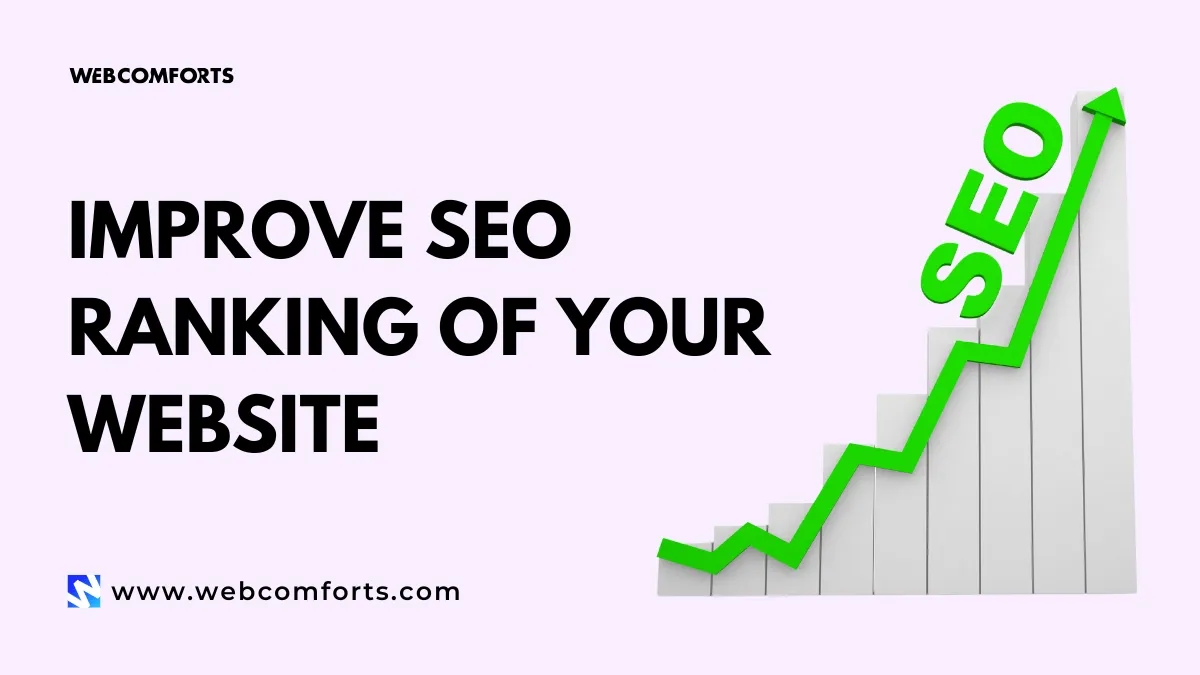Improve SEO ranking of your website
Search engine optimization is a technique that is used to increase the visibility and traffic of a webpage or a website. This is the only way to achieve higher rankings on search engines and to get more traffic and users on a web page or a website.
Strong and efficient SEO techniques and strategies applied to a website not only boost up the ranking on search engines but is helpful for the user search queries and phrases used. Despite all these advantages, a question arises,
“How do I get better ranking for my webpage or website in a search engine? OR
What SEO techniques should I apply to increase my search engine rankings?”
The answer to the above questions will be cleared after reading this article.
Some of the best SEO techniques you should apply to your website:
Following are some key points that may increase your search engine ranking especially Google ranking if you apply these kinds of strategies.
Before telling these techniques, I want to clear one thing that getting a rank on a search engine is not a piece of cake. You have to be patient and work hard regularly and smartly on daily basis, and then you would be able to get a better rank on a search engine.
Now coming to our subject, SEO is mainly divided into two parts.
· Onsite SEO
· Offsite SEO
For getting better results, you have to work on both of these as ranking is dependent on both of them. Each of these above mentioned tasks are defined below:
Following steps must be taken before moving to Offsite SEO so that less effort should be exerted.
1. DOCTYPE inclusion & W3C validation:
Website must have Doctype (! DOCTYPE
2. Meta-tags setting:
You must use the latest meta-tags so that your page can be indexed to search engines. Following are some Meta tags and their explanation you should take into consideration.
i. Title: This tag plays most important and most effective role in a search. The title of your page must be attractive, complete, simple and not longer than 60-70 characters and it must be relevant to keywords.
ii.Meta description: This is another important tag and it should also be included. You should set a brief, attractive, and strong description of your webpage so that search engine spiders to find it easily. Description should not be more than 150 characters and keywords must be included.
3. Keywords setting: For a good rank, keywords play a greater role. You have to use your selected keywords in your webpage. Most common keywords must also be used in title, description meta-tags and page content but keep one thing in mind that density of a specific keyword in the content must be optimized. The density of a keyword must be in between 2% and 4%.
4. Heading Settings: HTML’s headings (h1-h6) also effect webpage rank and they must be present in your webpage."H1 & H2 have vital importance and their inclusion is plus point. Heading should be used in every page and must contain common keywords.
5. Favicon inclusion: A favicon for your website should be there.
6. Page objects/ Http Requests: Page objects (html pages, images, CSS files, js files) are of key importance. Too many page objects slow down –page loading, since these objects increase http requests. HTTP requests must be as low as possible. These can be decreased by using various methods like using text instead of images, combining more external files to single one.
7. Code to text ratio: This is also another factor in SEO. Although it’s not a direct factor but some other factors depend on this such as site loading, speed and user experience. Code to text ratio should be balanced .Don’t use inline styles, inline scripts. Use CSS layout instead.
8. URL settings: Website URL and its entire links must be SEO friendly.Using underscores in URL is not good. Instead of using under-scores (_), use hyphens and dashes in your links.
a. URL Canonicalization: URL for a same website should be canonicalized.Read more
9. Inline styling and scripting settings: Don’t use inline styles and scripts. It lowers your page rank. Use external files instead. Check point 6
10. Image settings: You should use “Alt” attribute to every image you are using in your site. Using keywords and human readable captions in the”Alt” attribute is a good SEO practice.
a. Image Expire tags: You should use image expire tag
11. ;Deprecated HTML tags: Don’t use old, deprecated html tags, this will lower your page rank since these tags will eventually lose browser support and your webpage will render differently.
12. HTML page size: HTML page size affects loading time. Greater is the size, longer it will take to load the page and vice versa. It must be under average webpage size of 33kb. You should use HTML compression to reduce your page size and page loading time.
13. Frame set and Tables: Don’t use frames and nested tables; these will reduce your page loading speed.
14. Plaintext Emails: Don’t use plain text emails.Protect email links in a way that hides them from the spam harvesters. Make your emails used on your webpage invisible to email spiders. The best option is to replace your entire contact mechanism with a contact form by using the ‘POST’ method while submitting the form.
15. Google analytics: Website should be connected with Google analytics. Include Google analytics tracker script in your website.
16. Robots. Text File: Your site should Robots.text File
17. Sitemap: A site map should be included in a website.
18. Server settings:
a. Directory browsing: Directory browsing shouldn’t be allowed.
b. Libwww-perl access: Server shouldn’t allow Libwww-perl.
c. Server signature: Server signature should be turned off.
d. Safe browsing: Website shouldn’t be listed with malware or phishing activity.
More update coming soon

No comments yet. Be the first to post!